Last weekend, the Free-Rides visited the National Zoo in Washington, DC. Here are some of the animals we saw:
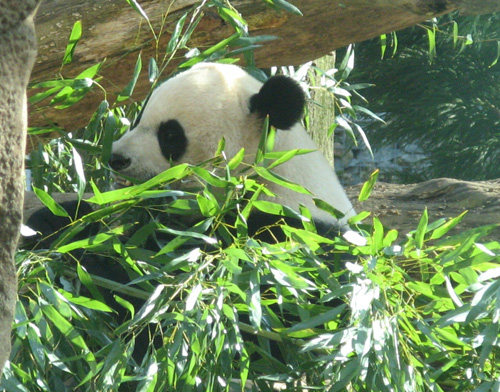
The giant panda.
Younger offspring: It eats a lot of bamboo.
Elder offspring: Would do great living in a Chinese restaurant if it had a hundred bucks.
Dr. Free-Ride: Why a hundred bucks?
Elder offspring: To buy bamboo, of course.
Younger offspring: We really only saw them eating.

The red panda.
Younger offspring: The red panda loves climbing and eats bamboo like the giant panda.
Elder offspring: They’re more closely related to raccoons, but they still love bamboo.
Younger offspring: I tried with the statue, so I think the red panda is small enough for me to carry.
Elder offspring: But it wouldn’t like being carried. It’s a wild animal.
Dr. Free-Ride: You know, if giant pandas lived in bamboo houses, I can totally picture red pandas rummaging through their bamboo garbage cans.
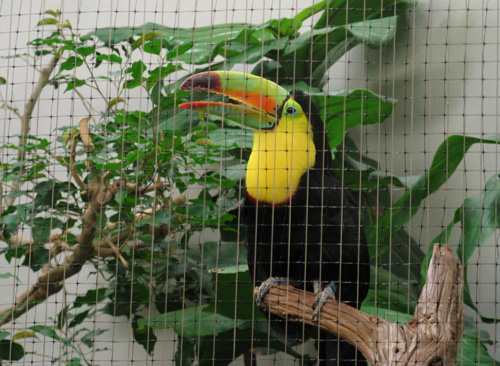
A toucan.
Dr. Free-Ride: Remember that toucan that kept chirping like a cricket?
Elder offspring: It was funny. At first.
Younger offspring: It was very annoying after a while.
Elder offspring: But colorful.

Storks.
Elder offspring: They were taller than I expected.
Dr. Free-Ride: Well, it takes a big big to carry babies.
Younger offspring: The storks don’t deliver babies.

Leaf-cutter ants.
Younger offspring: I like them, but it’s kind of strange when they don’t like eating the leaves because they only want to eat the fungi.
Elder offspring: Maybe they can’t digest the leaves.
Dr. Free-Ride: I think it’s cool that they use the leaves to set up gardens to grow the fungi they want to eat.
Younger offspring: I like them, but I don’t want to feel their bite.
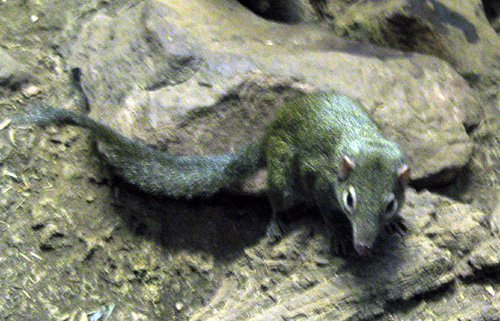
The elephant-nosed shrew (not pictured; this is a tree shrew).
Dr. Free-Ride’s better half: It was big! Who knew a shrew could get that big?
Dr. Free-Ride: It was smaller than a cat.
Dr. Free-Ride’s better half: But easily the size of a kitten.
Dr. Free-Ride: It has a very expressive nose.
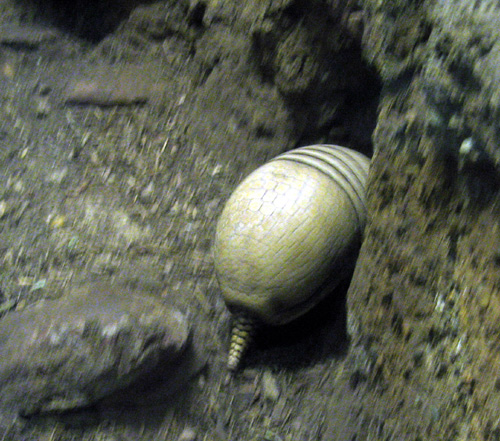
An armadillo.
Younger offspring: Cool! It has armor on it.
Elder offspring: And the armor is relatively lightweight.
Dr. Free-Ride: Funny looking for a mammal. But boy was it fast!
Elder offspring: I said the armor is relatively lightweight.
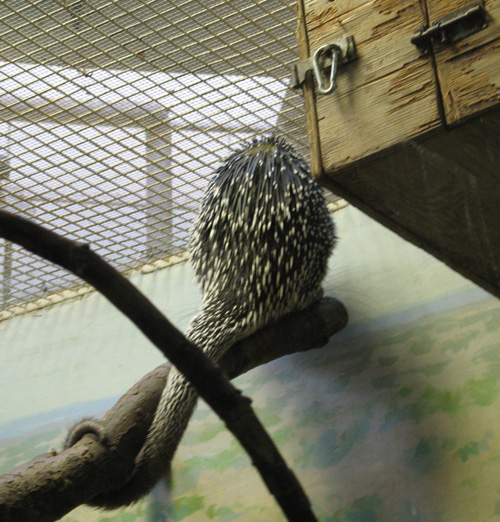
A prehensile-tailed … well, we couldn’t recall at first.
Younger offspring: It wasn’t an anteater!
Elder offspring: It wasn’t an echidna!
Younger offspring: It wasn’t even a hedgehog.
Elder offspring: It was a prehensile tail porcupine.
Dr. Free-Ride: I’m glad you remembered that.
Younger offspring: Cool tail.
Elder offspring: Nice quills.
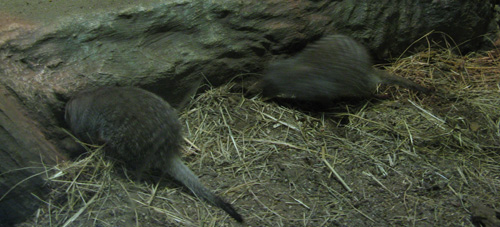
Mongoose.
Younger offspring: Look, mongooses!
Elder offspring: Mongeese?
Younger offspring: A mongoose and another mongoose.
Dr. Free-Ride: Too bad we missed feeding.
Dr. Free-Ride’s better half: Where they put a cobra into the cage?
Dr. Free-Ride: Yup, and the one who succeeds is fed.
Elder offspring: And the one who doesn’t is food.

Mongooses is correct, but there are some who would rather it be mongi.
Of course, if you has a lot of them nose to tail you would have a polygoose.
Zoos are one of the best antidotes to nature as depicted in many children’s books. I realize the sprogs are well beyond the “strollerderby” stage, but thought that you, as a reality-based parent might enjoy this post over at the Strollerderby blog:
http://www.babble.com/CS/blogs/strollerderby/archive/2008/12/31/5-Nature-Facts-Kids-Authors-Should-Tatoo-on-their-Forearms.aspx
It might also be interesting to get the sprogs’ reactions to some of the ideas there.
(Full disclosure: the author of the post is my daughter-in-law.)
Must say, ETD’s vocabulary has certainly expanded. Smart kid.
A bit of greater panda news from San Diego. Just recently the Chinese government and the San Diego Zoological Society have reached a new agreement in which the pandas now at the San Diego Zoo will be staying a bit longer, and for a lower fee.
It turns out we’re doing so well caring for our pandas and producing panda babies the Chinese have decided to have us keep doing it, and make it easier for us.
But, if you do come down here to see the pandas, be sure to spare a little time for the lowland gorillas, orangutans, and meerkats at the very least.
Now where keeping an animal for companionship is concerned, the first thing you need to do is to learn how to listen. It isn’t enough to know what a dog or cat or southern white rhino is telling you, you need to pay attention to what they are saying, and to believe them. A cat can hurt you, respect that.
So listen, and treat all animals capable of recognizing you as an individual as individuals themselves. Owls enjoy our company, rhinos enjoy our company, even tasmanian devils enjoy our company. But they don’t enjoy being abused. Nobody likes that. So listen to what an animal tells you, stay calm, and let the animal know he can trust you. And very important, show the animal you trust him.
But don’t be stupid. An animal tells you he doesn’t like you, believe him. He wants nothing to do with you, let him be. Never try to make an animal your friend. Let him become your friend if he wants to be. Cats see us as protectors and providers, it seems tasmanian devils do as well; but you can’t make a cat -or tazzie- into your own make believe baby, the cat -or tazzie- has to make that choice himself. The only thing you can do to sway the decision is to show you can be trusted to be a stand in parent, to be a friend.
So listen and be trustworthy. You’ll still have trouble, for I have yet to see any relationship that doesn’t, but it will make life easier than being bossy and controlling.
One more thing, you want to learn a lot, first learn to be still.